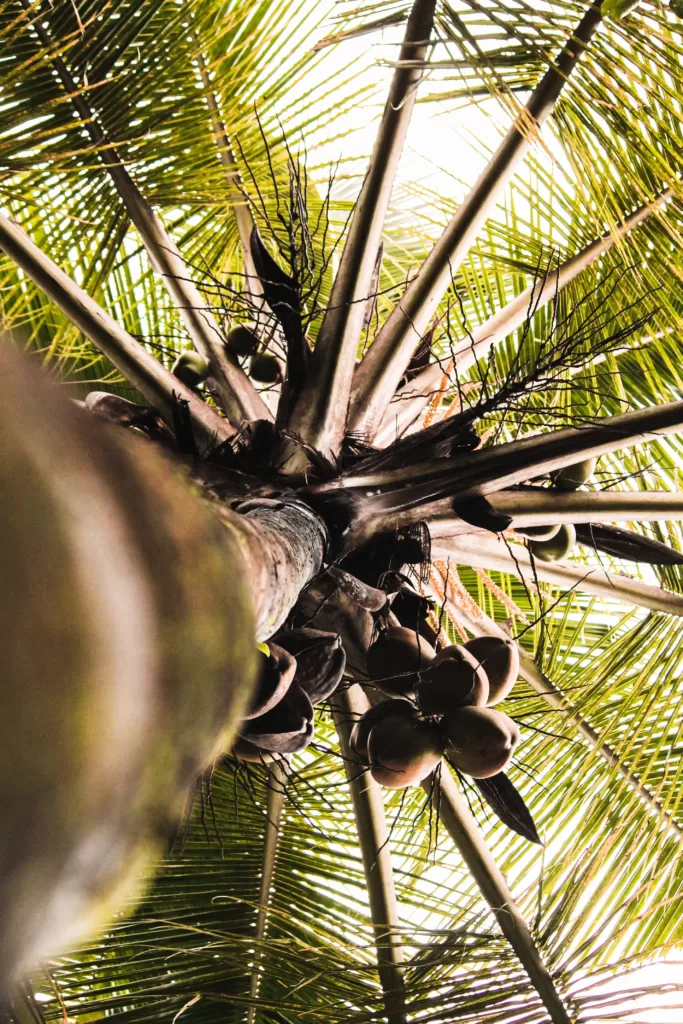Most bonsai trees do not need direct sunlight to thrive, and in fact, many species prefer bright, indirect light. Direct sunlight can cause leaf burn, especially during the hottest part of the day. It’s important to protect bonsai trees from direct sunlight during the hottest hours of the day, and in general, it’s better to place the tree near a window that receives plenty of natural light but not necessarily direct sun.
However, some species of bonsai, such as junipers and pines, do require direct sunlight to some degree. They are considered as sun-loving bonsai and need at least 4-5 hours of direct sunlight a day to thrive.
It’s important to note that each species of bonsai tree has its own specific needs and requirements, so it is essential to research the care requirements of the species you have, and to provide the proper amount of light. If you are unsure about the lighting requirements of your bonsai, it’s best to consult with a bonsai expert or to do more research on the specific needs of the species.
Table of Contents

Should a bonsai sit in water?
No, a bonsai tree should not sit in water. Bonsai trees need well-draining soil to prevent water logging and root rot. When watering your bonsai tree, it is important to use a watering can with a fine spout or a misting bottle, and to pour water directly onto the soil until it runs out of the drainage holes in the bottom of the pot.
It’s also important to note that after watering, the bonsai tree should be placed in a spot where any excess water can drain away. The bonsai tree should not be left sitting in a tray of water, as this can lead to the roots being constantly waterlogged and can lead to root rot.
It’s also important to keep in mind that the frequency of watering a bonsai tree depends on several factors, including the species of tree, the size of the pot, the type of soil, and the humidity and temperature of the environment. It’s important to monitor the moisture level of the soil frequently and adjust watering schedule accordingly. In general, bonsai trees should be watered when the top inch of soil is dry.
Is bonsai lucky inside the house?
Bonsai trees have been considered symbols of good luck and prosperity in many cultures. In Japan, for example, they are believed to bring good fortune and longevity. This belief comes from the fact that bonsai trees are miniature versions of nature and they are seen as a representation of nature’s power and beauty. They also require care and attention, which is seen as a way to cultivate patience, focus, and mindfulness.
However, it’s important to note that the belief that bonsai trees bring good luck is a cultural one and it may not be held by everyone. Additionally, the main purpose of having a bonsai tree inside a house is mainly to have a nice, green and healthy plant to decorate the house.
Whether or not a bonsai tree brings good luck, taking care of it can be a relaxing and meditative activity, and having a bonsai tree inside the house can also help to improve the air quality and add a touch of nature to the living space.
Why do bonsai leaves fall off?
Bonsai leaves may fall off for a variety of reasons, including:
- Environmental factors: Bonsai trees may lose leaves if they are exposed to extreme temperatures, low humidity, or poor air quality.
- Watering issues: Over-watering or under-watering can cause leaf loss. Bonsai trees need the right amount of water to stay healthy, and the frequency of watering depends on many factors such as the species, the size of the pot, the type of soil, and the humidity and temperature of the environment.
- Nutrient deficiencies: Bonsai trees may lose leaves if they do not receive the right amount of nutrients. This can happen if the soil is not fertilized regularly or if the tree is not getting the right balance of nutrients.
- Pests and diseases: Pests and diseases can cause leaf loss in bonsai trees. Regularly inspecting your bonsai tree for signs of pests or diseases and taking appropriate action if necessary can help prevent leaf loss.
- Pruning: Pruning is a normal part of bonsai tree care, but over-pruning or improper pruning can cause leaf loss.
- Natural cycle: Some bonsai species lose leaves seasonally as part of their natural growth cycle.
It’s important to remember that each species of bonsai tree has its own specific needs and requirements, so it is essential to research the care requirements of the species you have, and to provide the proper care and maintenance. By identifying the cause of the leaf loss and taking the appropriate action, you can help your bonsai tree to regain its health.

Why is my bonsai tree dying?
There are many reasons why a bonsai tree may be dying, but some common causes include:
- Environmental factors: Bonsai trees may die if they are exposed to extreme temperatures, low humidity, or poor air quality.
- Watering issues: Over-watering or under-watering can cause a bonsai tree to die. Bonsai trees need the right amount of water to stay healthy, and the frequency of watering depends on many factors such as the species, the size of the pot, the type of soil, and the humidity and temperature of the environment.
- Nutrient deficiencies: Bonsai trees may die if they do not receive the right amount of nutrients. This can happen if the soil is not fertilized regularly or if the tree is not getting the right balance of nutrients.
- Pests and diseases: Pests and diseases can cause a bonsai tree to die if left untreated. Regularly inspecting your bonsai tree for signs of pests or diseases and taking appropriate action if necessary can help prevent death.
- Repotting: A bonsai tree may die if it is not repotted when the roots have filled the pot. This can lead to the tree being root-bound, which prevents the tree from receiving the proper amount of water and nutrients.
- Wiring: Incorrectly wiring or leaving wire on for too long can cause damage to the branches and trunk of bonsai tree, leading to death.
It’s important to remember that each species of bonsai tree has its own specific needs and requirements, so it is essential to research the care requirements of the species you have, and to provide the proper care and maintenance. By identifying the cause of the death and taking the appropriate action, you can help prevent your bonsai tree from dying.
How long do Bonsai trees live?
The lifespan of a bonsai tree can vary greatly depending on the species of tree, the care it receives, and the environment it is kept in. Some species of bonsai trees, such as juniper and pine, can live for many decades or even centuries, while others may have a shorter lifespan.
Proper care and maintenance can help extend the lifespan of a bonsai tree. This includes providing the correct amount of light, water, fertilizer, and pruning. Also, repotting the tree regularly and keeping pests and diseases under control will help to ensure the tree remains healthy.
It’s important to note that many bonsai trees are considered to be “old” when they are between 50-100 years old, this is because they are considered to have reached an age where they have a certain level of maturity and character that make them interesting.
It’s also important to note that the environment in which the bonsai tree is kept in can greatly affect its lifespan. If bonsai trees are exposed to extreme temperatures, low humidity, or poor air quality, it can shorten their lifespan. In general, it’s hard to give a specific lifespan for bonsai tree but with proper care, it can live for many years, some species can live for decades.

Do you water a bonsai tree every day?
The frequency of watering a bonsai tree depends on several factors, including the species of tree, the size of the pot, the type of soil, and the humidity and temperature of the environment. In general, bonsai trees should be watered when the top inch of soil is dry. Watering every day is not necessary, and can lead to over-watering, which can cause root rot.
One way to check if the bonsai needs water is to stick your finger into the soil, if it feels dry it needs water. Another way is to lift the pot, if it feels light it needs water. It’s important to monitor the moisture level of the soil frequently and adjust the watering schedule accordingly. Some species of bonsai trees may require more frequent watering than others. For example, tropical bonsai species may need to be watered more often than others, while coniferous species like junipers and pines may need less water. Therefore, it’s a good idea to research the specific needs of the species of bonsai tree you have and adjust your watering schedule accordingly.
Where is the best place to put a bonsai tree?
The best place to put a bonsai tree will depend on the species of tree and its specific light, temperature, and humidity requirements. However, here are some general guidelines for placing a bonsai tree:
- Light: Bonsai trees need bright, indirect light to thrive. Place your bonsai tree near a window that receives plenty of natural light, but avoid direct sunlight, which can cause leaf burn.
- Temperature: Bonsai trees like temperatures between 60-75 degrees Fahrenheit. Avoid placing your bonsai tree near heat sources or air conditioning vents, which can cause fluctuations in temperature.
- Humidity: Bonsai trees prefer humidity levels between 40-60%. If the air in your home is dry, you can increase humidity around your bonsai tree by using a humidifier or by placing a tray of water near the tree and misting the leaves regularly.
- Protection: Bonsai trees should be protected from drafts, which can cause fluctuations in temperature and humidity.
- Viewing: A bonsai tree should be placed where it can be easily viewed and appreciated.
- Maintenance: Place your bonsai tree in a location that makes it easy to water and care for it.
It’s important to note that each species of bonsai tree has its own specific needs and requirements, so it is essential to research the care requirements of the species you have and to provide the proper care and maintenance. By providing the correct environment for your bonsai tree, you can help it to thrive and flourish.






